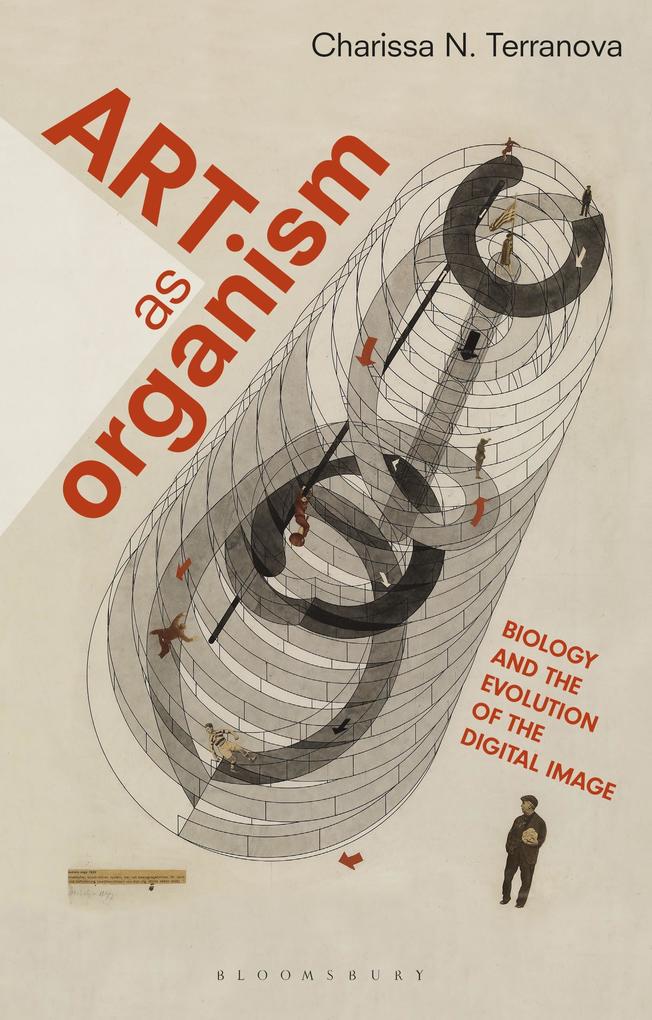
Zustellung: Do, 24.07. - Di, 29.07.
Versand in 3 Wochen
VersandkostenfreiBestellen & in Filiale abholen:
Art as Organism shows that the digital image was a rich and expansive artistic medium of modernism. Linking its emergence to the dispersion of biocentric aesthetic philosophies developed by Bauhaus pedagogue Laszlo Moholy-Nagy, from 1920s Berlin to the Massachusetts Institute of Technology in the 1970s, Charissa Terranova uncovers seminal but overlooked references to biology, the organism, feedback loops, emotions, and the Gestalt, along with an intricate genealogy of related thinkers across disciplines.
Unearthing a forgotten narrative of modernism, one which charts the influence that biology, General Systems Theory, and cybernetics had on modern art, Terranova interprets new major art movements such as the Bauhaus, Op Art, and Experiments in Art and Technology by referencing contemporary insights from architects, embryologists, electrical engineers, and computer scientists. From kinetic and interactive art to early computer art and installations spanning an entire city, this book charts complex connections between visual culture, science and technology that comprise the deep history of 20th-century art.
Unearthing a forgotten narrative of modernism, one which charts the influence that biology, General Systems Theory, and cybernetics had on modern art, Terranova interprets new major art movements such as the Bauhaus, Op Art, and Experiments in Art and Technology by referencing contemporary insights from architects, embryologists, electrical engineers, and computer scientists. From kinetic and interactive art to early computer art and installations spanning an entire city, this book charts complex connections between visual culture, science and technology that comprise the deep history of 20th-century art.
Inhaltsverzeichnis
Preface
Introduction: The Haptic Unconscious: Lá szló Moholy-Nagy's Organismic Aesthetics
1. Bauhaus Biology: The Beginnings of Biofunctionalism
2. Gyorgy Kepes and the Light image as Bio-Image: Pop Art-and-Science, Integration, and Distribution
3. The Distributed Image of the City: The Collaboration between Gyorgy Kepes and Kevin Lynch
4. Wet Perception: Op Art and New Tendencies, between the Gestalt and Ecological Psychology
5. The Digital Image in Art: The Generative Turn, Computational and Biological
Introduction: The Haptic Unconscious: Lá szló Moholy-Nagy's Organismic Aesthetics
1. Bauhaus Biology: The Beginnings of Biofunctionalism
2. Gyorgy Kepes and the Light image as Bio-Image: Pop Art-and-Science, Integration, and Distribution
3. The Distributed Image of the City: The Collaboration between Gyorgy Kepes and Kevin Lynch
4. Wet Perception: Op Art and New Tendencies, between the Gestalt and Ecological Psychology
5. The Digital Image in Art: The Generative Turn, Computational and Biological
Mehr aus dieser Reihe
Produktdetails
Erscheinungsdatum
30. Dezember 2021
Sprache
englisch
Seitenanzahl
336
Reihe
Bloomsbury 3PL
Autor/Autorin
Charissa N Terranova
Verlag/Hersteller
Produktart
kartoniert
Gewicht
594 g
Größe (L/B/H)
216/162/22 mm
ISBN
9781350270978
Entdecken Sie mehr
Bewertungen
0 Bewertungen
Es wurden noch keine Bewertungen abgegeben. Schreiben Sie die erste Bewertung zu "Art as Organism" und helfen Sie damit anderen bei der Kaufentscheidung.

































